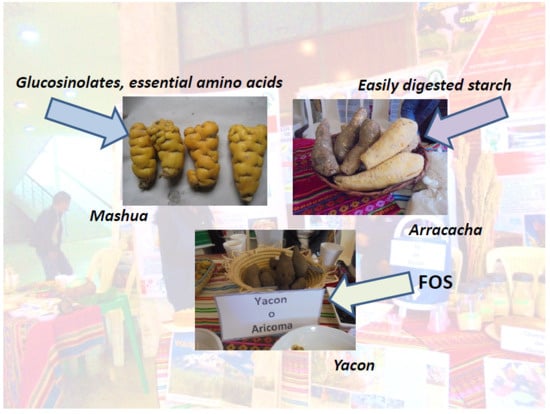Assessing the Nutritional Value of Root and Tuber Crops from Bolivia and Peru
Abstract
Share and Cite
Choquechambi, L.A.; Callisaya, I.R.; Ramos, A.; Bosque, H.; Mújica, A.; Jacobsen, S.-E.; Sørensen, M.; Leidi, E.O. Assessing the Nutritional Value of Root and Tuber Crops from Bolivia and Peru. Foods 2019, 8, 526. https://doi.org/10.3390/foods8110526
Choquechambi LA, Callisaya IR, Ramos A, Bosque H, Mújica A, Jacobsen S-E, Sørensen M, Leidi EO. Assessing the Nutritional Value of Root and Tuber Crops from Bolivia and Peru. Foods. 2019; 8(11):526. https://doi.org/10.3390/foods8110526
Chicago/Turabian StyleChoquechambi, Luz A., Iber Roy Callisaya, Alvaro Ramos, Hugo Bosque, Angel Mújica, Sven-Erik Jacobsen, Marten Sørensen, and Eduardo O. Leidi. 2019. "Assessing the Nutritional Value of Root and Tuber Crops from Bolivia and Peru" Foods 8, no. 11: 526. https://doi.org/10.3390/foods8110526
APA StyleChoquechambi, L. A., Callisaya, I. R., Ramos, A., Bosque, H., Mújica, A., Jacobsen, S.-E., Sørensen, M., & Leidi, E. O. (2019). Assessing the Nutritional Value of Root and Tuber Crops from Bolivia and Peru. Foods, 8(11), 526. https://doi.org/10.3390/foods8110526







